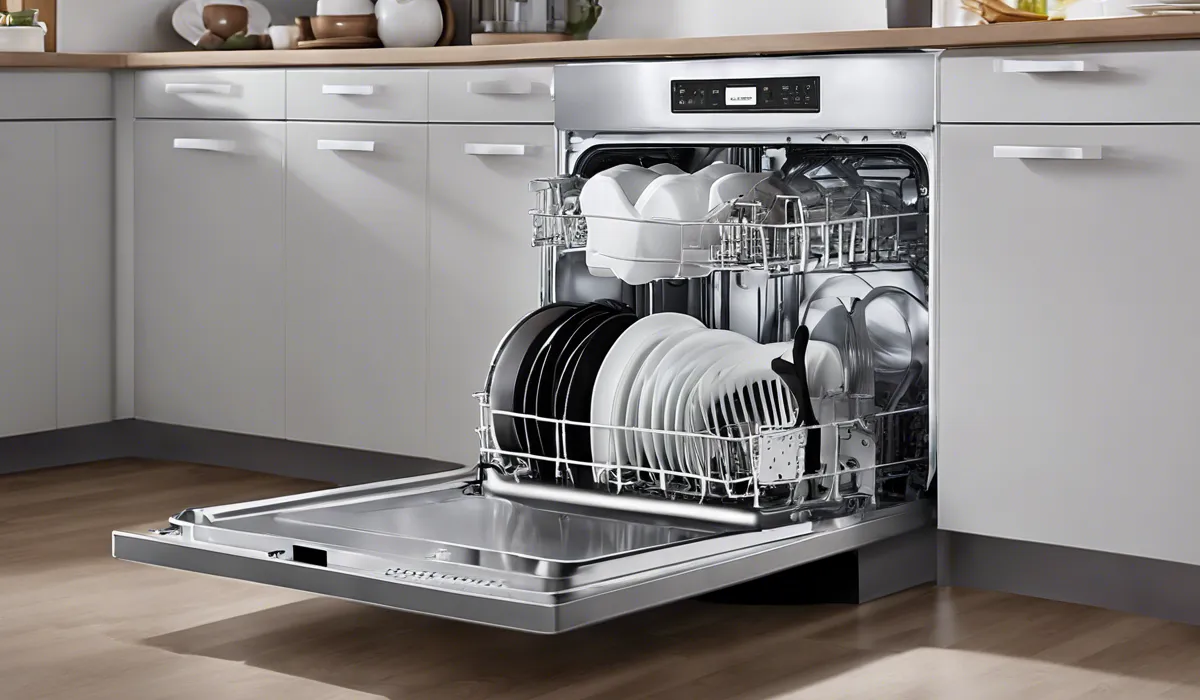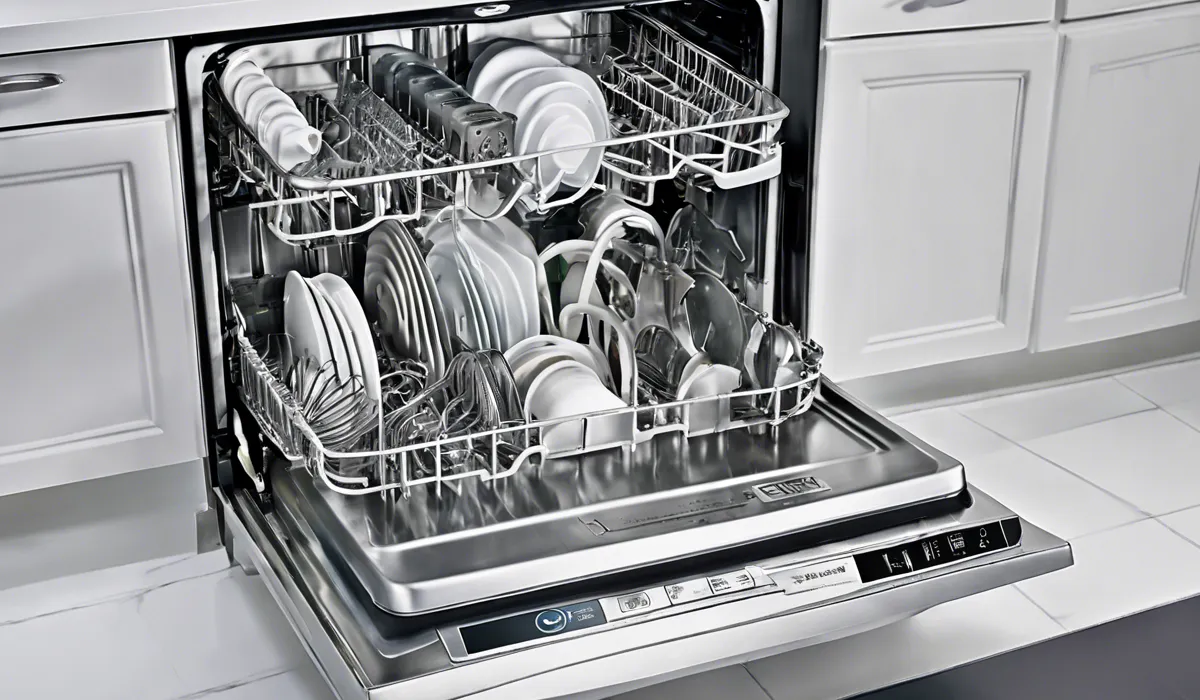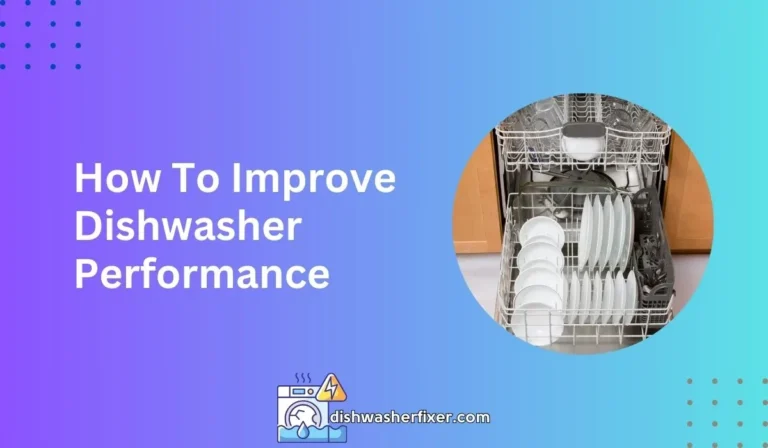How to Tell if Dishwasher Circulation Pump is Bad: Quick Diagnostics
To determine if a dishwasher circulation pump is bad, listen for unusual noises during a cycle, check for error codes on the display, inspect dishes for cleanliness post-cycle, and verify if water is circulating by observing spray arm movement.
Signs of a Failing Dishwasher Circulation Pump

Unusual Noises
One of the first indicators that your dishwasher circulation pump may be failing is the presence of unusual noises. These sounds can range from a subtle humming to a more pronounced grinding noise.
Grinding or Humming Sounds
A dishwasher should generally operate with a consistent, low-level sound. If you begin to hear a grinding sound, it could suggest that the pump’s motor bearings are worn out.
Similarly, a humming noise might indicate that the pump motor is struggling to turn or is seized.
Sudden Loud Noises During the Wash Cycle
Loud noises that occur suddenly during a wash cycle are a red flag. These sounds can suggest that an object is obstructing the pump or that the pump’s components have become dislodged or damaged.
Poor Cleaning Results
When dishes remain dirty or have a filmy residue after a wash, it can be a sign that the pump is not propelling water with enough force to clean effectively. If the soap dispenser does not empty, it could mean that water is not being pumped into the dispenser area.
Water Not Spraying From the Jets With Adequate Pressure
A noticeable decrease in the pressure with which water is sprayed from the jets often signals a problem with the circulation pump. The pump may not be delivering the necessary force to distribute water evenly throughout the dishwasher.
Water Not Circulating or Draining Properly
If water remains at the bottom of the dishwasher after a cycle, this could mean that the pump is failing to circulate and drain water as it should. Slow filling or water temperature issues can also be indicative of a pump problem.
Troubleshooting the Circulation Pump

Inspecting for Blockages
To troubleshoot the circulation pump, start by checking for any blockages. This involves inspecting the spray arms, the filter, and the sump area. Make sure that the impeller, which is critical for water movement, is not obstructed and moves freely.
Electrical Checks
Electrical issues can also impair pump function. Use a multimeter to test the pump motor for continuity. Examine all wiring connections, looking for signs of damage, such as corrosion or wear.
Assessing Pump Motor and Capacitor Health
Listen for a humming sound that might indicate the motor is stuck. Additionally, test the capacitor, which provides the initial surge of energy to start the pump, to ensure it holds a proper charge.
Repair or Replace the Circulation Pump

When to Repair
In some cases, a simple repair may suffice. If the issue is due to blockages or loose wiring, these can often be fixed without the need for a new pump. Damaged components like the impeller or seals may also be replaceable.
When to Replace
However, if there are signs of severe motor damage, such as burnout, or if issues persist after troubleshooting, it may be time to replace the pump. Conduct a cost-benefit analysis to determine whether repair or replacement is the most economical option.
Steps for Replacement
Replacing the pump involves safety precautions like disconnecting power, removing components to access the pump, and installing a new pump.
After reassembly, it’s crucial to test the dishwasher to ensure the new pump is functioning correctly.
FAQs About Dishwasher Circulation Pump Issues
How can I tell if my dishwasher circulation pump is failing?
You can suspect a failing circulation pump if you hear unusual noises during the cycle, see error codes related to the pump, notice dishes are not clean after a cycle, or observe that the spray arms are not moving as water is not circulating.
What are common signs of a bad dishwasher circulation pump?
Common signs include strange noises like humming or grinding, error messages on the dishwasher display, dishes remaining dirty after washing, or lack of movement in the spray arms indicating no water circulation.
What should I do if there are no error codes but the dishwasher isn’t cleaning well?
If there are no error codes but your dishes are still dirty, inspect the circulation by checking the spray arm movement and listening for the sound of water during the cycle, which may point to a circulation pump issue.
Can I diagnose a bad dishwasher circulation pump without professional help?
Yes, you can diagnose a bad pump by listening for abnormal sounds, looking for error codes, checking if dishes are cleaned properly, and observing whether the spray arms are moving during a cycle.
Will a dishwasher run if the circulation pump is bad?
A dishwasher may run even if the circulation pump is bad, but it will likely not clean dishes effectively and could make unusual noises or show error codes during operation.
Final Thoughts
To ascertain the health of a dishwasher circulation pump, keenly listen for atypical sounds during operation, be vigilant for display error codes, evaluate the cleanliness of dishes after a wash, and observe the spray arms.





